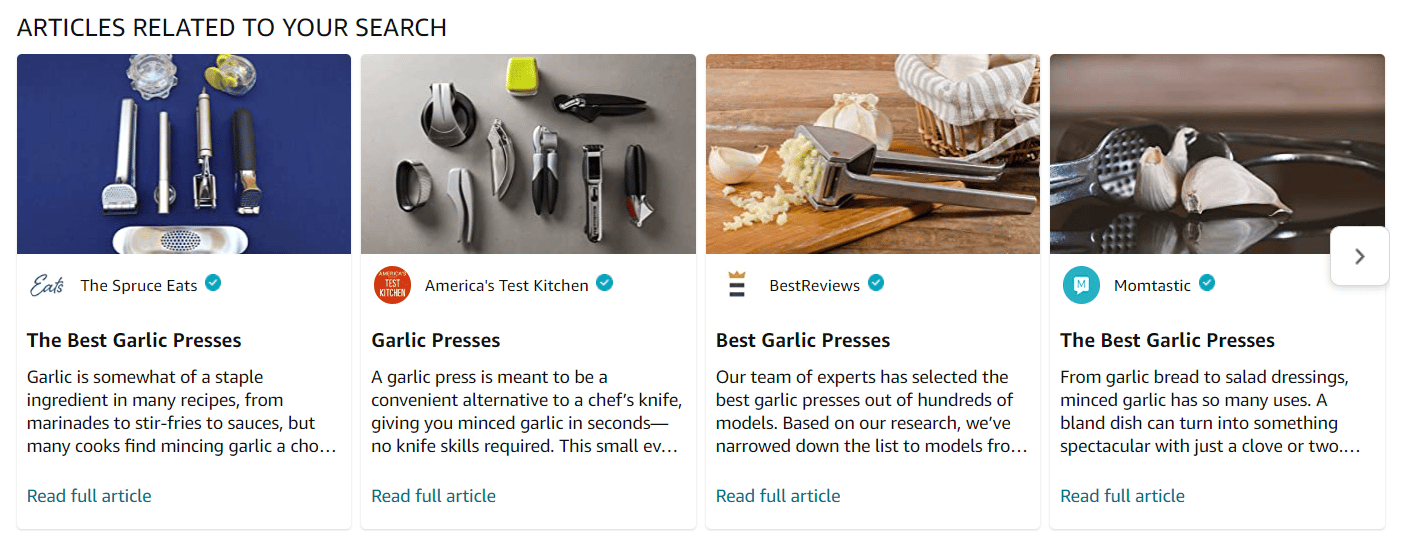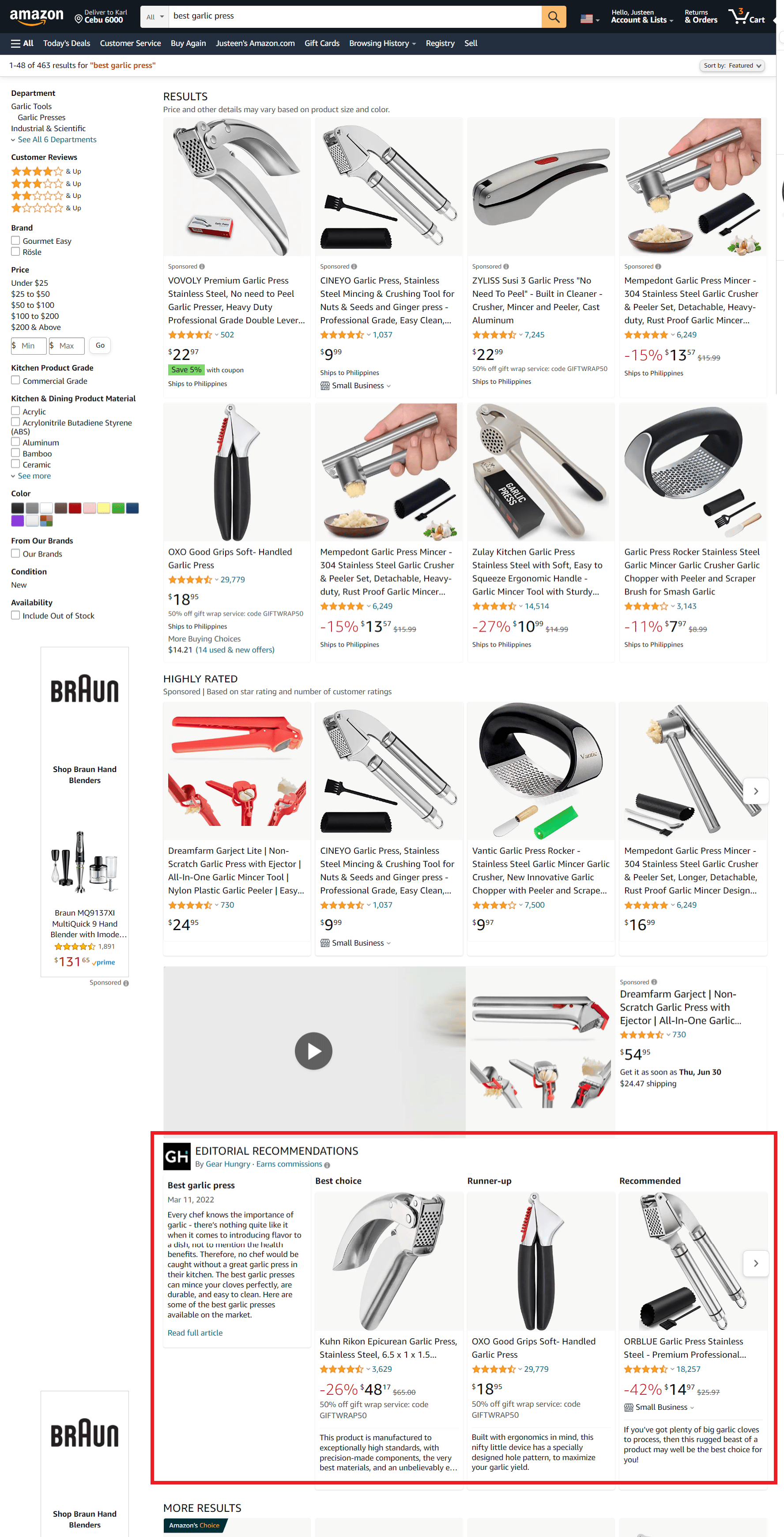How To Get Amazon Editorial Recommendations

This article contains affiliate links that will allow us to earn commissions without any extra cost to you. Read our full disclosure here.
Just as blockbuster movies get a boost from positive critic reviews, Amazon products benefit from recommendations from product review websites and influencers.
This article will explain what Amazon Editorial Recommendations are all about and how Amazon sellers can get them for their products, including potentially paying for them
Related Listening: Episode 435: How Editorial Recommendations Affect Lead Conversions
Contents
- What are Amazon Editorial Recommendations?
- How are Editorial Recommendations Displayed?
- Who Writes Amazon Editorial Recommendations?
- How Do I Get Amazon Editorial Recommendations?
- What are the Benefits of Amazon Editorial Recommendations?
- Can I Buy Editorial Recommendations on Amazon?
- Are Amazon Editorial Recommendations Worth It?
- Final Thoughts
What are Amazon Editorial Recommendations?
Amazon Editorial recommendations are essentially like movie reviews for Amazon products. They appear under a section on the first page of search results, featuring products that third-party content creators, niche influencers, and publishers consider the best in the category.

Editorial recommendations add a lot of value to sellers whose listings get featured in this section, since they appear on page 1 of the search results. For shoppers, editorial recommendations could make the shopping experience and product research much easier, as these articles are votes of confidence from well-known publishers and content creators for the product category. For sellers, having an editorial review for your product can result in more clicks and sales for your listings.
Editorial recommendations have been around for several years, however, they have become more popular in recent years for sellers as there are now opportunities to essentially pay for these placements (more on this shortly).

OR 10% OFF Every Month When You Use Code: ECOMCREW10
How are Editorial Recommendations Displayed?
Editorial recommendations appear as a distinct section roughly a third of the way down a search results page. Articles are displayed based off of keywords, similar to how sponsored products ads run. An editorial recommendation for your product goes into a rotation with content from other publishers, especially for recommendations containing competitive keywords.
It is also important to note that the section is somewhat impermanent and may appear to some customers but not to others. It largely depends on the keywords or search queries that customers are using. Editorial recommendations will be displayed about an estimated 25% of the time.
Using the garlic press example above, we can see that the Editorial Recommendations section breaks up the search results page and is shown as a distinct section, potentially making it more attractive to shoppers.
One section related to editorial recommendations is the “Articles Related to Your Search” section.

The difference is that this section shows a list of articles of recommended products from different publishers and takes customers away from the search results page, while the editorial recommendations section is integrated into the first page and immediately shows several recommended products—i.e., customers don’t have to click away from the search results page to discover the top products.
Related Reading: Amazon Badges and How to Get Them
Who Writes Amazon Editorial Recommendations?
Editorial recommendations are written by content creators and publishers participating in Amazon’s Onsite Affiliates Program. The onsite program is an extension of the Amazon Associates (affiliate) Program and as onsite affiliates, publishers bring their product-related content to Amazon instead of posting on their own sites to enhance customer shopping experience. As of writing, Onsite Affiliates is an invite-only program and it includes some big publishers like the NY Times-owned Wirecutter and Forbes.
Amazon has no hand in the opinions expressed in the articles as the authors have full control over the content written. So if you believe the reviews to be inaccurate, you may reach out to the publisher directly—keep in mind though that publishers earn commissions for every qualified sale, so the stuff said of products in this section are expectedly positive.
How Do I Get Editorial Recommendations?
Only sellers and products that meet the basic eligibility requirements are subject to writeups by publishers who write editorial recommendations. Among them are:
- It should have at least 100 reviews;
- It should have a rating of at least 4 stars;
- The seller should have at least 30,000 in sales;
- It should belong to the top 20 percent of Amazon’s best sellers for a particular category.
- No relation to religion, drugs, or sex;
- No medical claims;
- High levels of inventory; and
- High-performance on some keywords
Considering the above eligibility criteria, it’s obvious that editorial recommendations are more appropriate for seasoned Amazon sellers rather than startups. That said, some of the best practices for new sellers on Amazon greatly help boost your chances of getting recommendations in the future.
What are the Benefits of Getting an Editorial Recommendation?
Just like good user ratings, sponsored ad placements, and being the Best Seller in the category, your products get a significant boost in visibility if featured on the editorial recommendations section, especially because it appears on the first page of an Amazon search.
Below is not an exhaustive list, but these are the more direct benefits of having your products featured in the editorial recommendations:
- Sales boost. As mentioned above, the extra visibility and ‘vote of confidence’ from product reviewers and publishers could translate to a significant boost in sales
- Improved authority. Selling the product that reviewers and influencers recommend not only boost your sales, it also helps you build your authority within your niche as well as brand awareness and loyalty
- More product visibility. Editorial recommendations are distinct from sponsored product ads and other placements on the search results page, which means they can appear concurrently. The editorial recommendations section breaks up the results and is featured prominently on the page. In most cases, products also get tagged under subcategories like “Editor’s Choice”, “Best Budget Choice”, “Best Eco-friendly Choice”, “Recommended”, and so on
- SEO optimization. There’s no clear direct benefit between editorial recommendations and search engine ranking, however, the increase in sales velocity will indirectly help your SERPs.
- Exclusive Promotions. In some cases, products have gained access to exclusive promotional opportunities and placement on Amazon’s marketing channels after being featured on the editorial recommendations section

Can I Buy Editorial Recommendations on Amazon?
Since Amazon has no control over the content written about products, it allows sellers to engage publishers directly if they deem the content as not representative of their brand and products (again, take note that editorial recommendations necessarily say positive things about your products).
Recently, basically buying editorial recommendations has become big business in the Amazon seller community. Agencies like Seller Rocket or hbwcommerce.com basically have a connection of publishers who can get your product placements in the editorial recommendations section.
If you work with an agency, they will usually charge you with either a one-time charge or a commission based on the sales made through editorial recommendations. Prices range vastly, but generally are $500 or more per placement and often some percentage of sales occurring from the editorial recommendation as well.
It’s worth noting that often fixed fees are paid for editorial recommendations placement and not always guaranteed. There’s also been reports in seller communities of opaque charging of commissions. We haven’t experienced this directly ourselves, but they have been reported and likely it’s a large part due to the fact that Amazon does not offer granular tracking of sales occurring from the result of editorial recommendations.
Are Amazon Editorial Recommendations Worth It for Sellers?
The most important question arguably is: are Amazon editorial recommendations worth it?
Getting an Amazon Editorial Recommendation for your product will almost certainly get you some additional sales. If you get the Editorial Recommendation free and organically it’s a huge win for your product.
If, however, you must pay an agency to get an Editorial Recommendation for your product, the math becomes a lot more murky. Most agencies charge significant money for placements. In a super-competitive category it may be worth it but for less competitive categories it might not make sense.
If you run Sponsored Brands ads, the conversion rate you receive on these ads for a given keyword is likely the best barometer you have for how Editorial Recommendations will perform for you. So, for example, if your Sponsored Brands ad for “fishing rod holders” converts at 5%, you can expect very roughly somewhere around that range for an Editorial Recommendation.
Final Thoughts
Amazon Editorial Recommendations can help boost your product’s visibility and conversions. Knowing how they work and how to get in touch with credible publishers could go a long way for your ecommerce brand.
Did we miss anything about editorial recommendations? Leave a comment below.





This article was so helpful. As a fellow publisher I was trying to understand the program because there was such limited information on Amazon it’s self. Thank you for posting.
Hi I need Amazon publishers who can write for our Products Amazon Editorial recommendation !